Kelly Cohen
A Genetic Fuzzy-Enabled Framework on Robotic Manipulation for In-Space Servicing
Apr 21, 2025Abstract:Automation of robotic systems for servicing in cislunar space is becoming extremely important as the number of satellites in orbit increases. Safety is critical in performing satellite maintenance, so the control techniques utilized must be trusted in addition to being highly efficient. In this work, Genetic Fuzzy Trees are combined with the widely used LQR control scheme via Thales' TrUE AI Toolkit to create a trusted and efficient controller for a two-degree-of-freedom planar robotic manipulator that would theoretically be used to perform satellite maintenance. It was found that Genetic Fuzzy-LQR is 18.5% more performant than optimal LQR on average, and that it is incredibly robust to uncertainty.
Explainable AI Insights for Symbolic Computation: A case study on selecting the variable ordering for cylindrical algebraic decomposition
Apr 24, 2023Abstract:In recent years there has been increased use of machine learning (ML) techniques within mathematics, including symbolic computation where it may be applied safely to optimise or select algorithms. This paper explores whether using explainable AI (XAI) techniques on such ML models can offer new insight for symbolic computation, inspiring new implementations within computer algebra systems that do not directly call upon AI tools. We present a case study on the use of ML to select the variable ordering for cylindrical algebraic decomposition. It has already been demonstrated that ML can make the choice well, but here we show how the SHAP tool for explainability can be used to inform new heuristics of a size and complexity similar to those human-designed heuristics currently commonly used in symbolic computation.
Comparison Between Genetic Fuzzy Methodology and Q-learning for Collaborative Control Design
Aug 28, 2020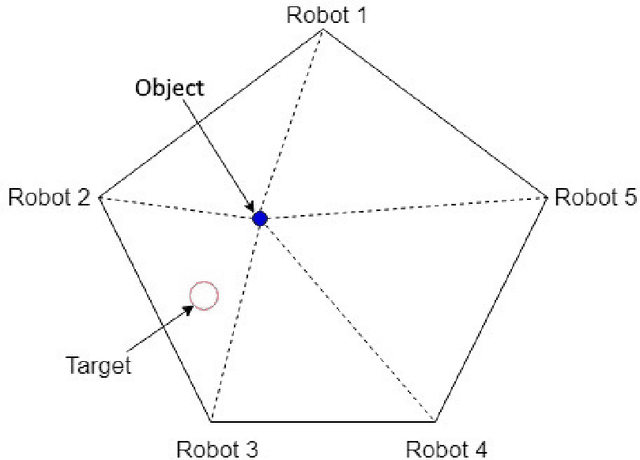
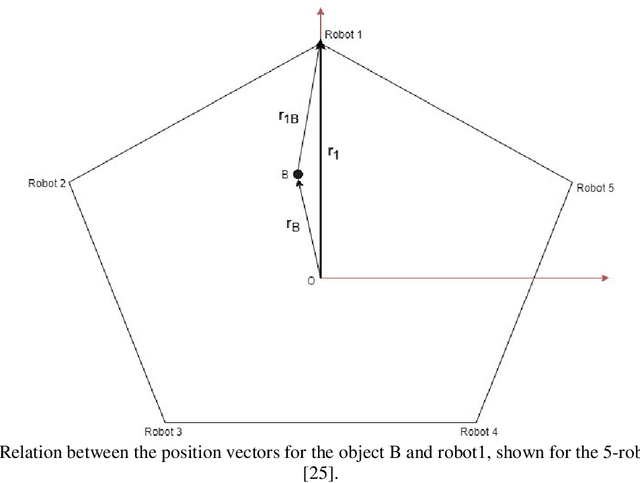

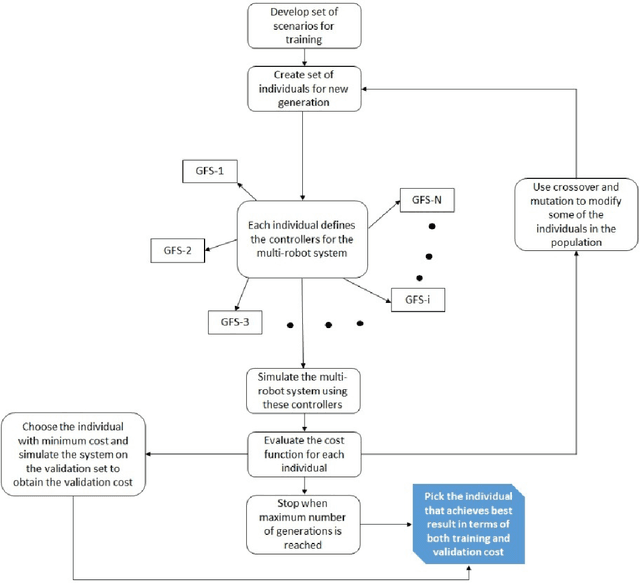
Abstract:A comparison between two machine learning approaches viz., Genetic Fuzzy Methodology and Q-learning, is presented in this paper. The approaches are used to model controllers for a set of collaborative robots that need to work together to bring an object to a target position. The robots are fixed and are attached to the object through elastic cables. A major constraint considered in this problem is that the robots cannot communicate with each other. This means that at any instant, each robot has no motion or control information of the other robots and it can only pull or release its cable based only on the motion states of the object. This decentralized control problem provides a good example to test the capabilities and restrictions of these two machine learning approaches. The system is first trained using a set of training scenarios and then applied to an extensive test set to check the generalization achieved by each method.
* 15 pages, 9 figures
Quaternion Feedback Based Autonomous Control of a Quadcopter UAV with Thrust Vectoring Rotors
Jun 28, 2020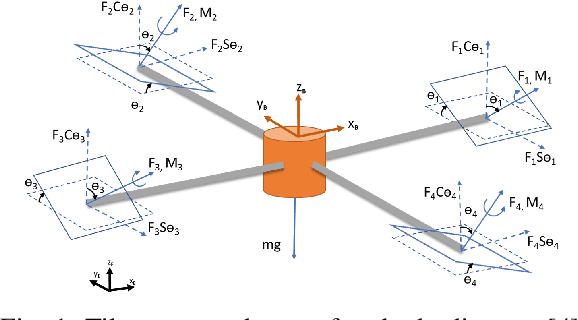

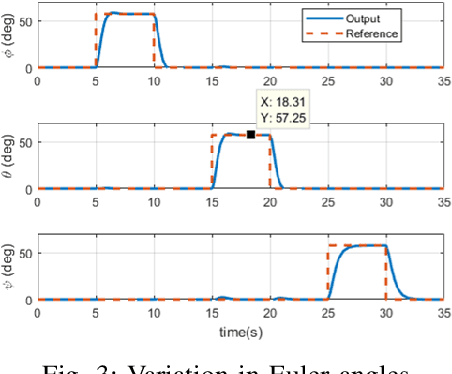
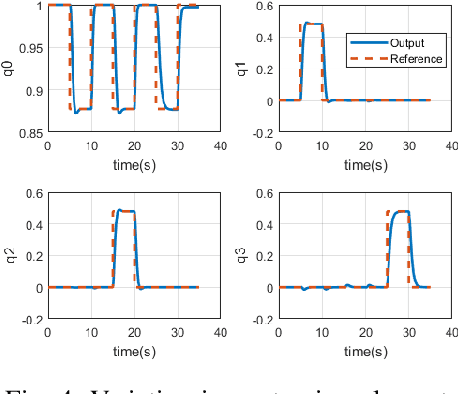
Abstract:In this paper, we present an autonomous flight controller for a quadcopter with thrust vectoring capabilities. This UAV falls in the category of multirotors with tilt-motion enabled rotors. Since the vehicle considered is over-actuated in nature, the dynamics and control allocation have to be analysed carefully. Moreover, the possibility of hovering at large attitude maneuvers of this novel vehicle requires singularity-free attitude control. Hence, quaternion state feedback is utilized to compute the control commands for the UAV motors while avoiding the gimbal lock condition experienced by Euler angle based controllers. The quaternion implementation also reduces the overall complexity of state estimation due to absence of trigonometric parameters. The quadcopter dynamic model and state space is utilized to design the attitude controller and control allocation for the UAV. The control allocation, in particular, is derived by linearizing the system about hover condition. This mathematical method renders the control allocation more accurate than existing approaches. Lyapunov stability analysis of the attitude controller is shown to prove global stability. The quaternion feedback attitude controller is commanded by an outer position controller loop which generates rotor-tilt and desired quaternions commands for the system. The performance of the UAV is evaluated by numerical simulations for tracking attitude step commands and for following a way-point navigation mission.
 Add to Chrome
Add to Chrome Add to Firefox
Add to Firefox Add to Edge
Add to Edge